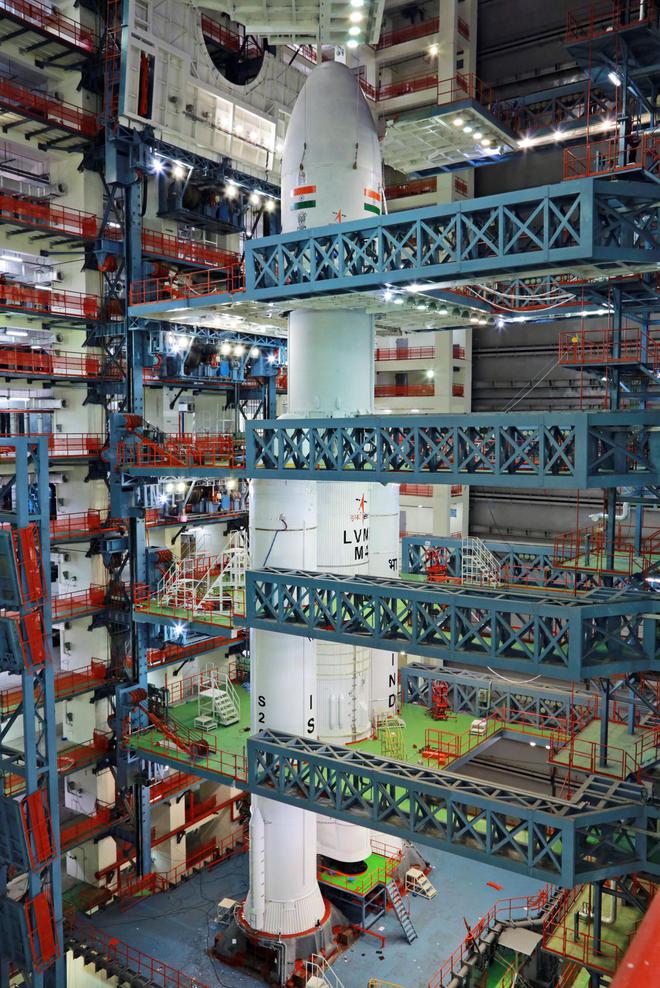Indian Space Research Organisation (ISRO), which is planning to launch the Chandrayaan-3 moon mission in July, has integrated the spacecraft with the launch vehicle — Launch Vehicle Mark-III (LVM3).
On July 5, ISRO tweeted: Today, at Satish Dhawan Space Centre, Sriharikota, the encapsulated assembly containing Chandrayaan-3 is mated with LVM3.
ISRO has, so far, not announced the date of the launch. However, the launch window for the Chandrayaan-3 is between July 12 and 19.

ISRO Chairman S. Somanath has said that the space agency would pick the earliest possible date to launch the mission.
Chandrayaan-3 is India’s third moon mission, and is a follow-up to Chandrayaan-2, to demonstrate end-to-end capability in safe landing and roving on the lunar surface.
Chandrayaan-3 consists of an indigenous lander module (LM), propulsion module (PM), and a rover with an objective of developing and demonstrating new technologies required for inter-planetary missions.
According to ISRO, the lander has the capability to soft land at a specified lunar site, and deploy the rover, which will carry out in-situ chemical analysis of the lunar surface during the course of its mobility. The Lander and the Rover have scientific payloads to carry out experiments on the lunar surface.

The main function of PM is to carry the LM from launch vehicle injection till final lunar 100-km circular polar orbit, and separate the LM from PM. Apart from this, the Propulsion Module also has one scientific payload, as a value addition, which will be operated post-separation of the Lander Module.
After its launch in mid-July, as in the case of India’s previous moon mission, Chandrayaan-2, the orbital raising will take place. The lander and orbiter will orbit the moon before touching down on the moon.
Mr. Somanath had earlier said that ISRO has added more fuel to the lander, along with new equipment, and also strengthened it. Chandrayaan-3 will be going in the same path as its predecessor, and will also be landing at the same site.







